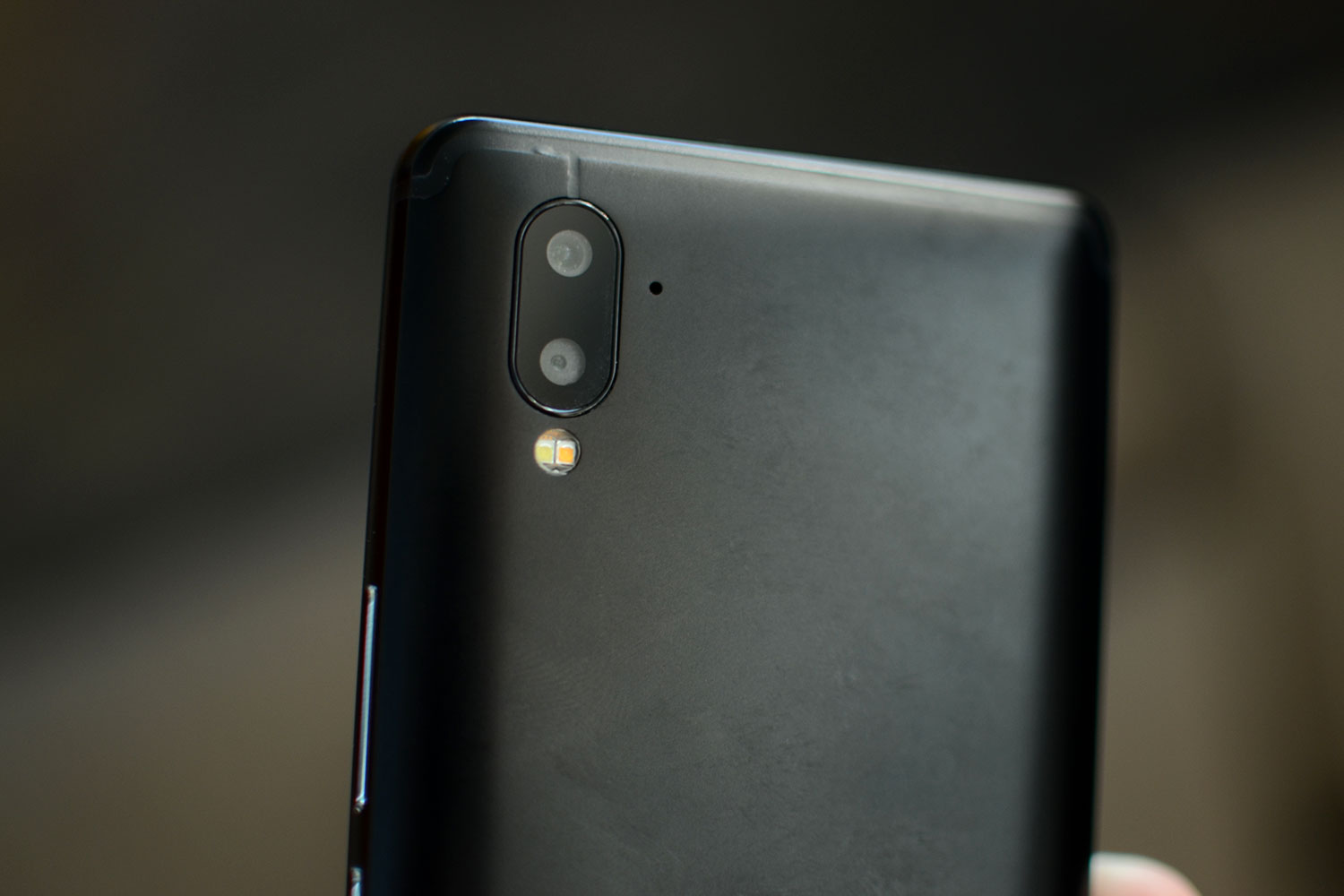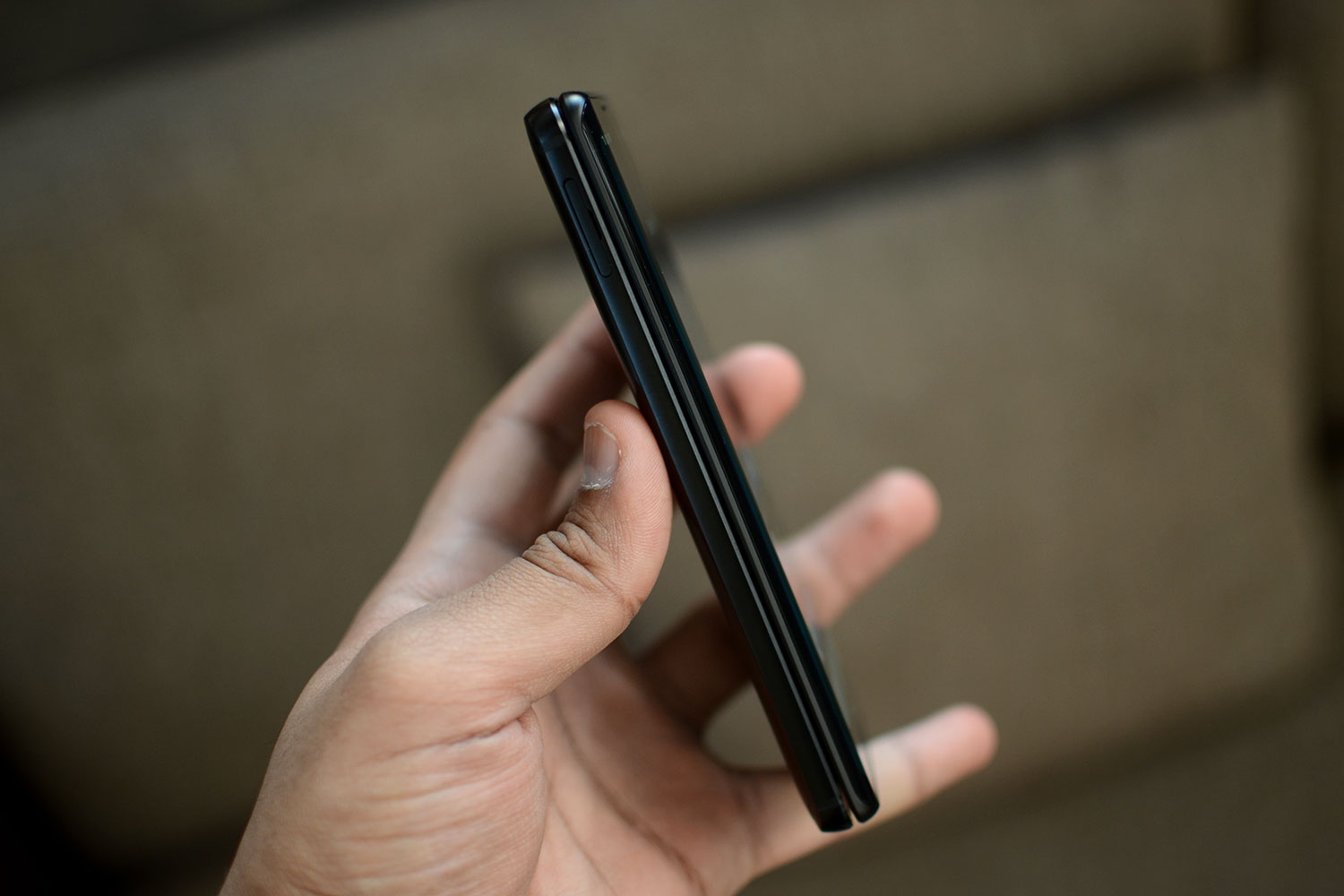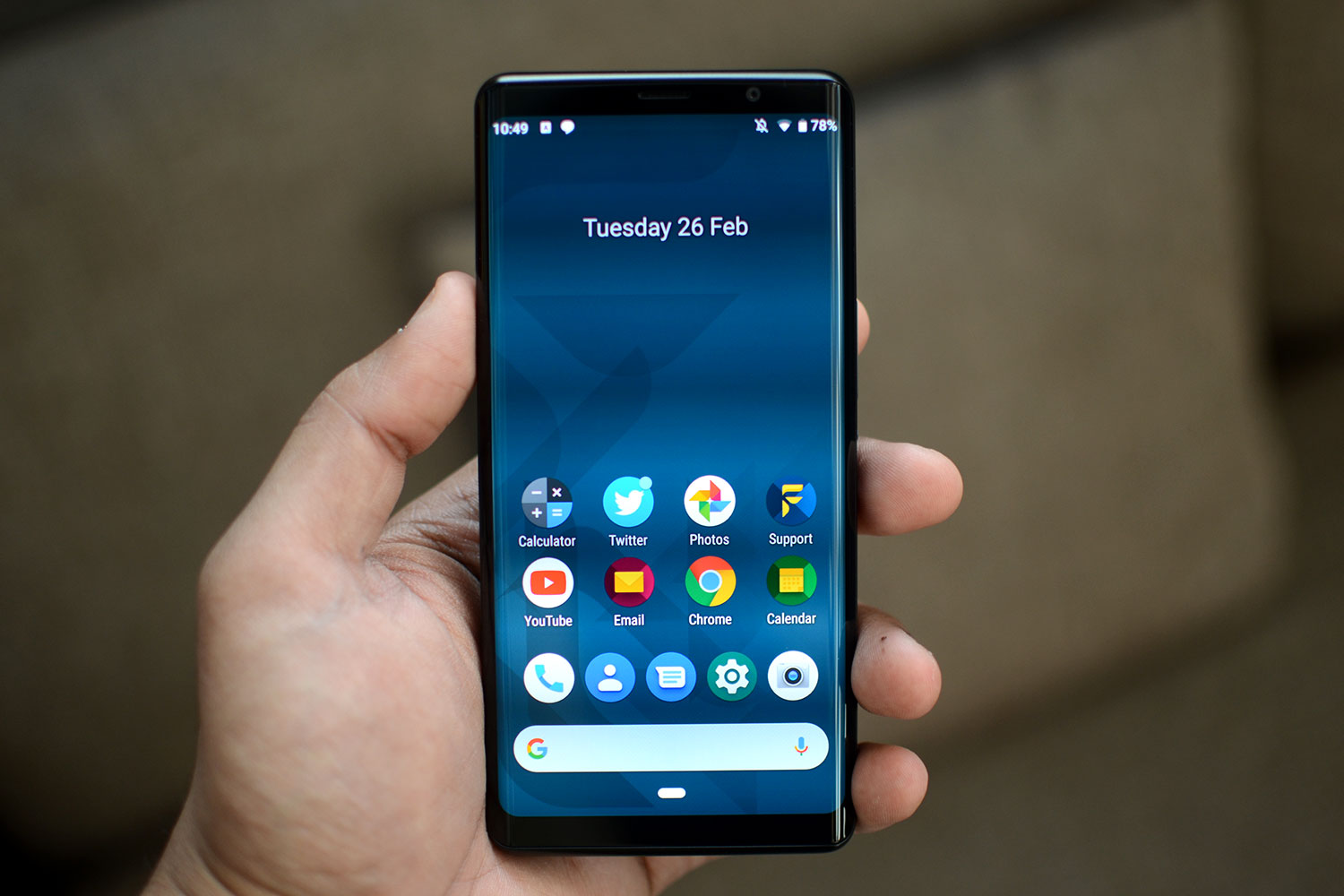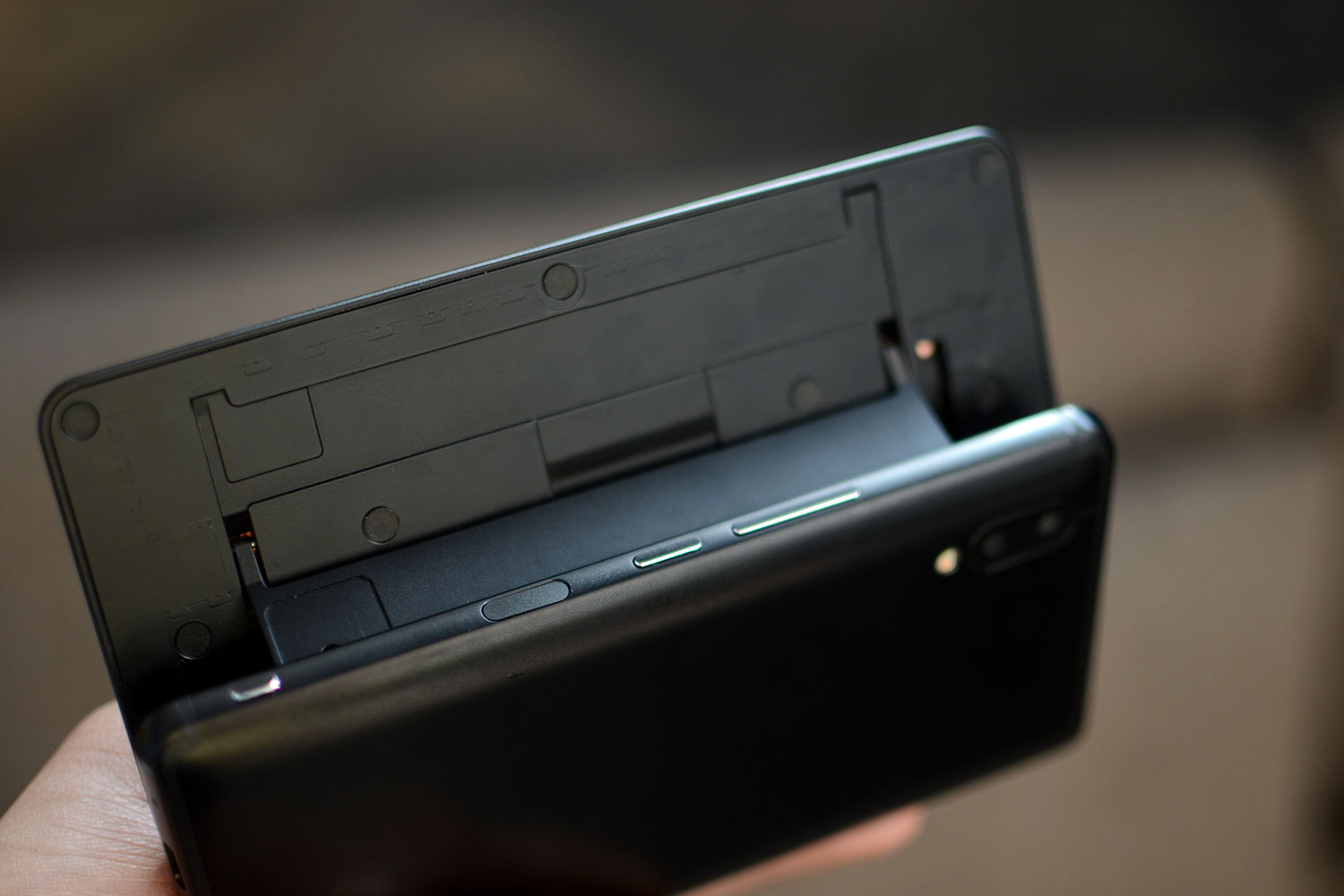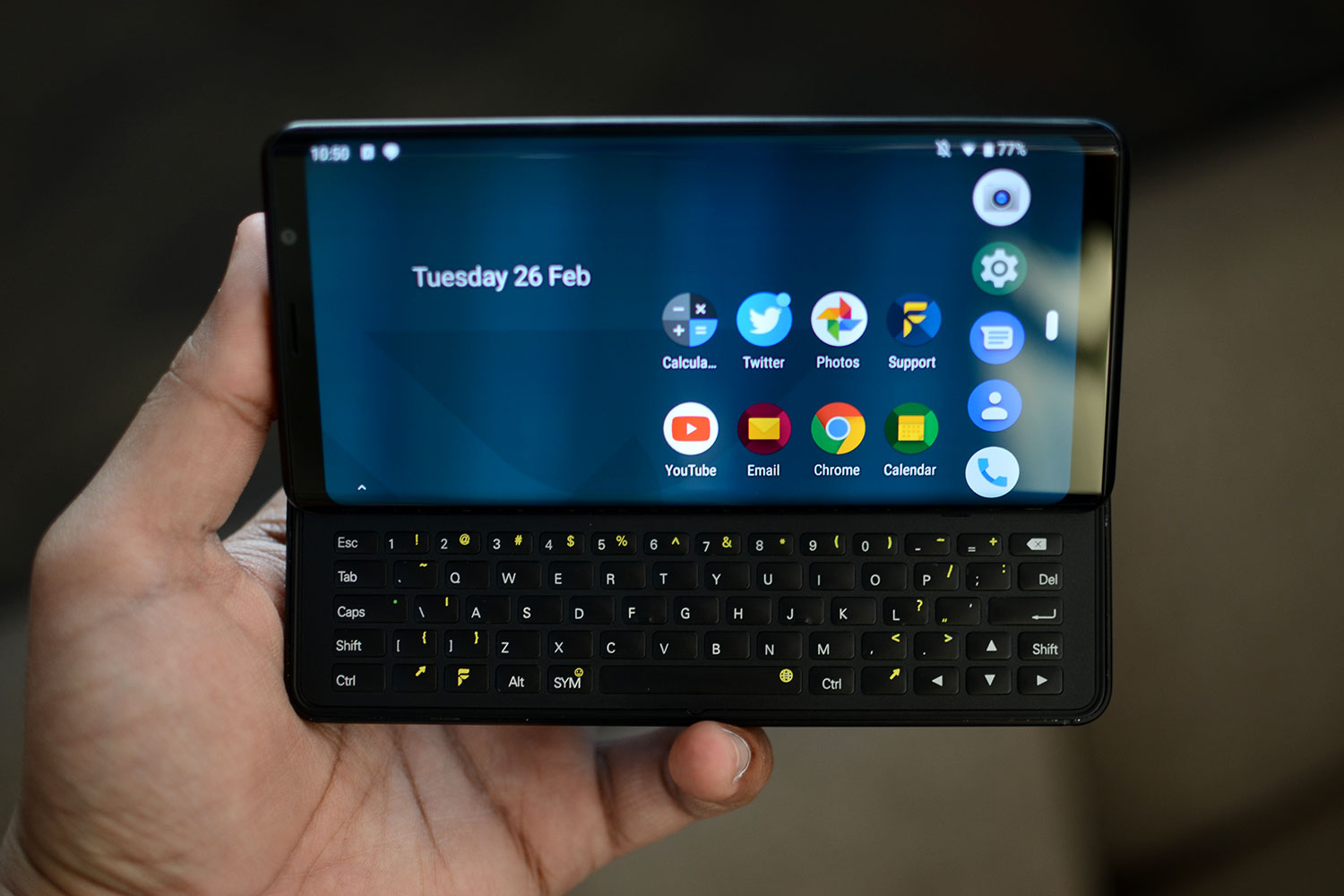

Lusting for a physical keyboard on a smartphone? You’re not the only one. We’ve seen TCL’s success in licensing the BlackBerry brand name to create phones with keyboards again. But those devices at the moment don’t look anything like most smartphones — there are no large screens with slim bezels, hole-punch cameras, or notches in the displays.
If you want a full-size physical keyboard on a phone with a spacious, modern-looking screen, one of your only options is the F(x)tec Pro 1 from London company F(x)tec. Here’s everything you need to know about it.
The keyboard
Why a phone with a keyboard? Well, the founders of the company wanted to make one for themselves.
“There’s still a huge following and a huge desire for things like buttons, keyboards,” Adrian Li Mow Ching told Digital Trends at Mobile World Congress 2019. “So for us, we’re users — we’re customers of smartphones — and we wanted to bring those things back.”
The team wanted to pair the keyboard with a modern screen. Samsung’s 2019 Galaxy range has some of the thinnest bezels around the screen, so you’re getting a beautifully large screen, whereas the BlackBerry Key2 has a 4.5-inch screen, and it’s not ideal for consuming a lot of media.
F(x)tec’s Pro 1 has a 5.99-inch AMOLED screen with a 2,160 x 1,080 resolution, so from the front it looks like any contemporary smartphone, with Gorilla Glass 3 protecting it. The bezels surrounding the screen are quite thin, and watching movies and videos will feel natural (by today’s standards). But you also get the benefit of sliding the screen to the side to unveil a backlit QWERTY keyboard with 64 keys.
The sliding mechanism is satisfying, and the company has tested it more than 100,000 times and found no failures in the operation, so you ideally shouldn’t need to worry about it wearing down after some use. Sliding it open does require a bit of force, and you’ll need to get used to the motion of opening it. Once open, you can use the keyboard to prop the phone’s screen up, which is ideal if you’re watching a movie on a plane.
You can move around the stock Android 9 Pie interface with the keys on the keyboard, and you can create keyboard shortcuts to open apps. So if you tap and hold “I,” you can set it to open Instagram; it’s a feature we’ve seen on TCL’s BlackBerry devices.
The phone
Android Pie is mostly unchanged, but the F(x)tec team made some quality of life improvements to make the software work better with a keyboard. For example, gesture navigations don’t work naturally when a phone is in landscape mode, but on the Pro 1, you can simply swipe the home button left to start scrolling through Recent apps. Android 10 will come to the phone, but there’s no timeline.
It has a dual-camera setup on the back — one 12-megapixel camera is paired with a 5-megapixel one for depth sensing, and F(x)tec said the camera is still not final yet. The selfie camera has 8 megapixels. Uniquely, there is a physical shutter button on the side of the phone to use with the camera. It’s below the fingerprint sensor, which you can use to unlock the phone quickly.
The Pro 1 is powered by Qualcomm’s Snapdragon 835 processor — a flagship chipset from 2017 — with 6GB of RAM, and 128GB of internal storage. There’s a MicroSD card slot if you need more space.
A 3,200mAh battery is in tow, along with Quick Charge 3.0 for faster wired charging, dual stereo speakers, a headphone jack, and NFC for Google Pay.
Pricing and availability
The F(x)tec Pro 1 costs $699 on F(x)tec’s website — $50 more than the company originally said — and pre-orders are open now. They will start shipping in mid-September with a general release kicking off in October.
Updated on September 5, 2019: We’ve added details on the F(x)tec Pro 1’s release date and price.
